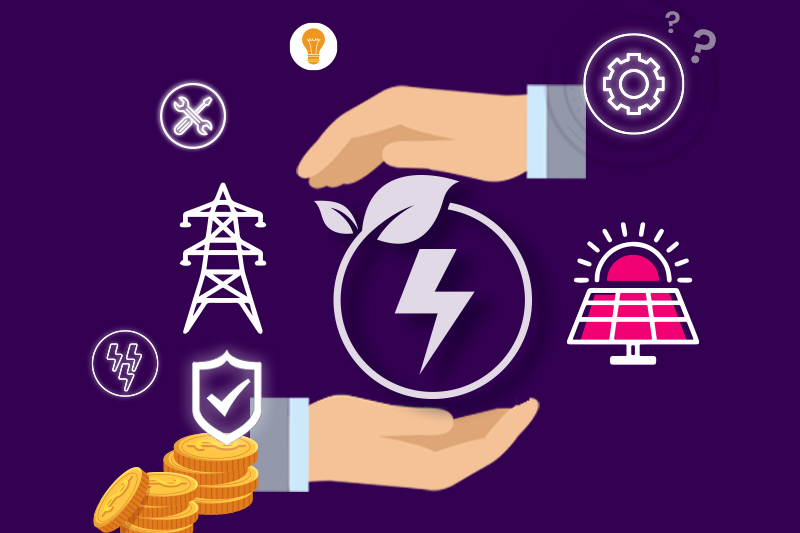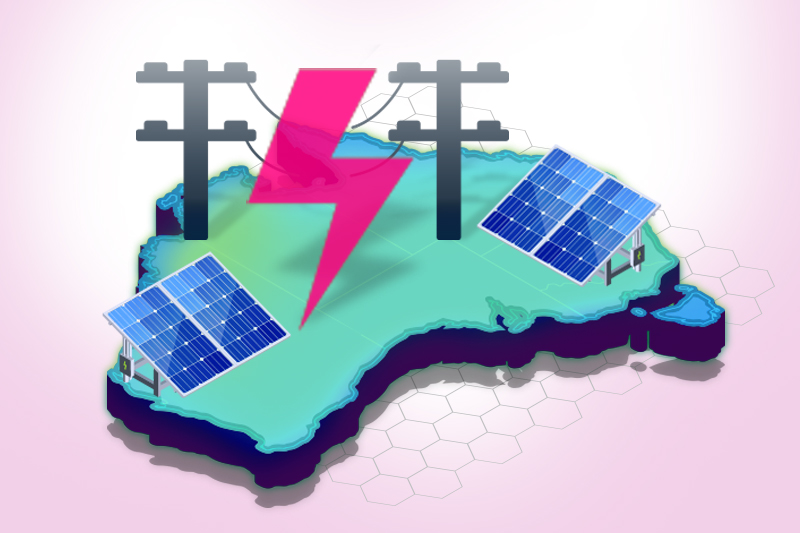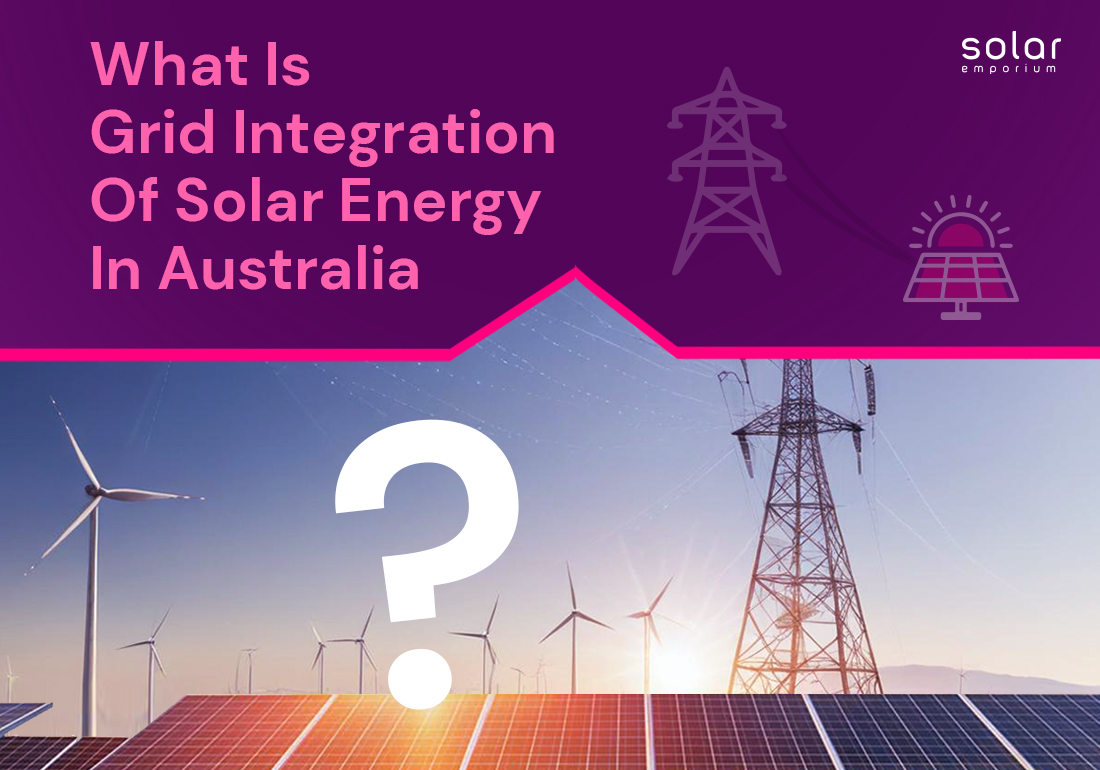Australia’s energy market is undergoing a big change as the country aims to achieve net-zero emissions by 2050.
The rapid increase in renewable energy projects, like wind and solar, is causing delays in connecting these new sources to the power grid.
Grid integration from solar energy will improve this situation significantly! So, what is grid integration of solar energy? And how does it work? We will get to it one by one.
With many renewable projects waiting to be connected and old coal power plants closing soon, we must invest in new renewable energy and transmission systems to keep the power grid stable and secure.
Shutting down coal power stations without fixing these connection issues could lead to problems like power outages and grid instability. Grid integration from solar energy can solve this issue.
How the Grid Operates in Australia
The Australian electrical grid operates through interconnected transmission and distribution networks. Until now, it has been mostly centralised, which has made it easier to coordinate the integration of distributed energy resources (DERs) like solar and wind.
As the energy landscape changes, integrating DERs brings new challenges and opportunities that require innovative solutions and collaboration among various stakeholders.
This shift means we must rethink how we manage the grid to ensure it stays stable, reliable, and efficient, even as more energy is generated and decentralised.
Key Players in the Australian Energy Landscape
The Australian energy system includes a mix of state-owned and privatised network components, each focused on integrating more renewable energy. The Australian National Electricity Market (NEM) is primarily managed by the Australian Energy Market Operator (AEMO).
Connecting renewable energy projects to the grid in Australia involves several key players:
Transmission Network Service Providers (TNSPs): They manage the high-voltage transmission network and handle the technical and operational aspects of connecting new energy sources.
Distribution Network Service Providers (DNSPs): These sectors manage the lower-voltage distribution networks that deliver electricity to homes and businesses.
Australian Energy Market Operator (AEMO): AEMO ensures the grid’s reliability and oversees the day-to-day operations of the electricity and gas markets in all states except Western Australia and the Northern Territory.
These organisations work together to integrate renewable energy into the grid, ensuring a smooth transition to a more sustainable energy future.
What is Grid Integration of Solar Energy and How Does it Work?

Solar grid integration means connecting solar energy to the main utility grid. As the use of clean energy grows and more solar power is installed worldwide, this integration is becoming common.
Two types of solar generation are connected to the grid: distributed generation, which includes small-scale projects for homes and businesses, and centralised generation, which involves large-scale projects connected through transmission lines.
Centralised solar projects are cheaper and easier to control because they benefit from economies of scale. Distributed solar projects, however, offer benefits like reduced energy loss, increased grid resilience, and lower costs.
Despite these advantages, solar power’s variable and spread-out nature presents technical and economic challenges. Various solutions exist to help integrate more solar power into the grid.
Solar system integration involves developing technologies and tools to bring solar energy onto the electricity grid while keeping it reliable, secure, and efficient.
Solutions to Integrate Solar into the Grid
The Electrical Grid
For most of the past 100 years, electrical grids were simple systems with large power plants located far from the electricity used. These grids have become much more complex.
Modern grids include large power plants and variable energy sources like solar and wind, energy storage systems, power electronic devices like inverters, and smaller-scale energy generation systems like rooftop solar panels and microgrids.
These smaller and more spread-out energy sources are known as distributed energy resources (DER).
The electrical grid is divided into two parts: transmission and distribution systems. The transmission grid comprises high-voltage power lines that carry electricity from large power plants over long distances.
High voltage is used to reduce energy loss during transport. The distribution grid comprises lower-voltage lines that deliver electricity to homes and businesses. Substations and transformers convert power between high and low voltages.
Traditionally, electricity flowed only from the power plant to the consumer. However, with systems like rooftop solar, the grid has to handle two-way electricity flow, as these systems can send excess power back into the grid.
Power Electronics/ Inverters

First, we need advanced equipment and software to manage the flow of solar energy into the grid. One example is solar inverters, which convert the direct current (DC) from solar panels into the grid’s alternating current (AC). These smart inverters also help stabilise the grid by adjusting energy flow based on demand.
With more solar and DERs added to the electrical grid, we need more power electronic devices.
These devices convert energy from one form to another. Such as changing high- to low-voltage, regulating power flow, or converting direct (DC) to alternating (AC) electricity, depending on where the electricity is going and how it will be used.
Up to 80% of electricity might flow through these power electronic devices by 2030. Inverters are a crucial type of power electronic device for solar energy. They convert the DC electricity generated by solar panels into the AC electricity used by the grid.
Solar Plus Storage
Energy storage systems, like batteries, are crucial for storing excess solar energy produced during sunny periods and releasing it when the sun isn’t shining, such as at night or on cloudy days. This ensures a steady electricity supply and reduces reliance on non-renewable energy sources.
Since solar energy is only produced when the sun is shining, storing it for later use is important. This helps balance electricity generation and demand. Developing batteries or thermal storage systems is key to adding more solar energy to the grid.
Grid Resilience and Reliability
The electrical grid must reliably provide power, so utilities and power system operators must know how much electricity solar systems produce in real-time.
Adding more solar and DERs to the grid brings both opportunities and challenges for grid reliability. Modern grids with a mix of traditional and distributed generation can make handling problems like storms or blackouts harder.
However, power electronics can gather real-time information about the grid and help control its operations. Special “grid-forming” inverters could even use solar energy to restart the grid during a blackout.
We also need accurate forecasting tools to predict how much solar energy will be available at any given time. Solar power depends on sunlight, which can change due to weather. Accurate predictions are essential for maintaining a stable energy supply. These forecasting tools use data from weather stations and satellites to predict sunshine levels and solar energy production.
The grid infrastructure must be upgraded to handle the additional power from solar energy. This includes improving transmission lines and distribution networks to prevent overloads and ensure solar power can reach consumers efficiently.
Smart grid technologies can also help manage the flow of solar energy. Smart grids use sensors, communication networks, and advanced control systems to monitor and adjust the electricity supply in real-time. This makes it easier to balance supply and demand, even with solar power’s fluctuating nature.
Powering Ahead into the Future

Australia’s coal-fired power stations are shutting down faster than expected, likely out of the National Electricity Market (NEM) by 2038.
To meet the 2050 emission reduction targets, we must shift from fossil fuels to clean energy as soon as possible. But what steps do we need to take to achieve this?
We must plan carefully when closing coal power plants, especially regarding the transmission network that links New South Wales, South Australia, Victoria, and Queensland.
To successfully transition, we must replace the lost power generation with renewable energy sources like solar, wind, and battery storage systems.
We must also upgrade the transmission network to effectively manage the new energy sources. This careful planning and execution will help maintain grid stability and prevent power outages.
Solar Emporium is here for all of your solar needs! Get a free solar quote today!







